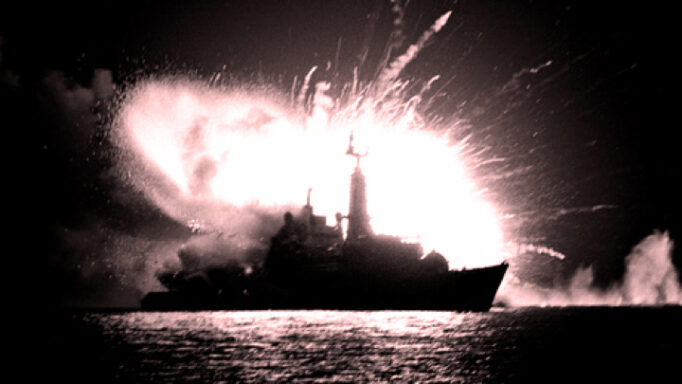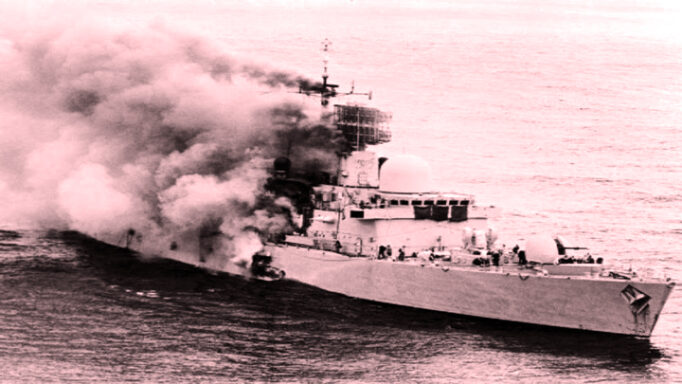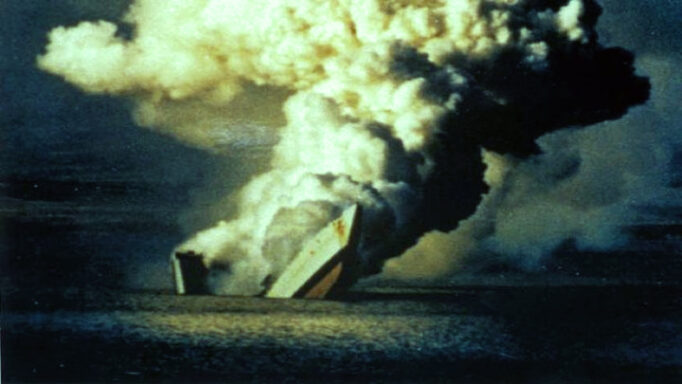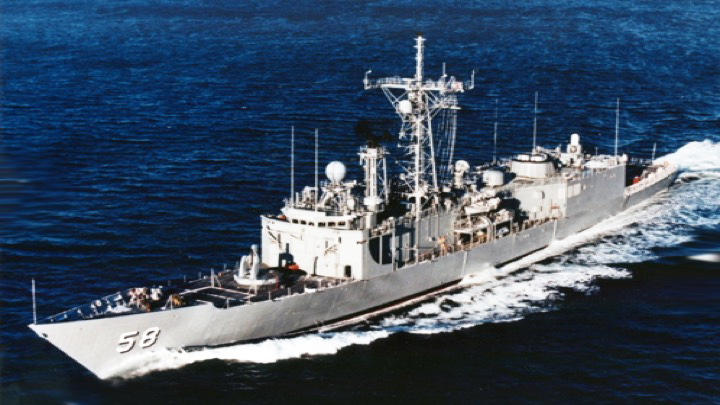INTRODUCTION
This article features some details for discussion on how to determine the design a fighting ship capable for credible defense during high intensity conflict at the contested sea areas of our territorial seas.
The foregoing explains how fighting credibility and combat reputation can be achieved by a warship by evaluating and using certain tools of information whether the ship we acquired has the characteristics, performance, tasks, capabilities, etc. in order to meet our defense requirements to be credible enough to meet the challenges of land, air and sea battles as well as on the surface, air, and anti-submarine within the battle sphere of the warship.
CHARACTERISTICS OF THREAT
There are various threats to a warship. Some of the greatest assortments of weapons platforms that can interfere with the survivability of the warship are:
- Ground Fighter Attack Aircraft (GFAA) – capable to launch multiple and coordinated attack at the speed of at least Mach 2 (ratio of speed of sound versus speed in aircraft), and can launch anti-shipping missiles at a stand-off distance of about 50 km.
- Attack Helicopter – capable to launch multiple and coordinated attacks with anti-shipping missiles at a stand-off distance of about 50 km; helicopters are difficult to destroy, relatively slow, but very agile.
- Shallow Water Attack Submarine – capable to launch wire-guided torpedoes or with homing acoustic guidance system from a distance of 8-10 km, and torpedo speed of 40 knots in extremely shallow waters where it is very difficult to detect and conclude a deliberate attack.
- Fast Attack Missile Boat – a single or multiple attack craft can attack a Frigate from different directions, and launch anti-shipping missiles with an active radar-infrared homing system.
- Suicide Terrorist – A warship is a sitting duck while docked at a pier. Being stationary and moored alongside a pier makes for an easy target to swimmers and attackers armed with RPGs or explosives.
- Characteristics of Hostile Threat Ordnance:
- Anti-Ship Missiles equipped with active radar homing seeker;
- infrared homing guidance with minimum speed of Mach 2;
- Stand-off range of 15km-20km-50km; flight altitude of 20m above water surface;
- single shot with a kill probability of 90%; Anti-surface Torpedoes capable of 40 knots speed at firing distance of 8-10 km; Guidance system of wire-guided or acoustic-guided lock-on systems; and
- Warhead weighing 100 kgs, and capable of splitting the ship’s keel in half. This is the most dreaded ordnance feared by the naval commanders.
EFFECT OF SUCCESSFUL ATTACK ON WARSHIP
Primary Weapons Effect. This consist of kinetic energy, blast fragmentation, shockwave, whipping, etc. likely from an Anti-Shipping Missile (ASM) hitting the center of the large cross section of the ship. Torpedoes and mines can create underwater explosions lifting the ship from the waters, and breaking the ship into parts. Naval Gunfire with armor-piercing shell/high explosive incendiaries could penetrate the hull’s inner section and explode at the interior section of the ship.

Fig. 1
Secondary Weapons Effect. In the aftermath of an attack, a large portion of the lethality is the ability to create a ball of fire from the exploding ordnance and munitions at the magazine room onboard, spreading smoke, confusion, and dead bodies everywhere in the ship.

Fig. 2
Tertiary Effect. The principal hazard to the ship could be a total loss when the ship becomes dead in the seaway due to power disruption, flooding, inoperable pumps, damage in the engine room, loss of steerage and propulsion, damage in the bridge and combat information center (CIC), collapse of super-structures, before capsizing and sinking to the bottom of the sea. The last ditch defense is damage control, which depends on how fast the damages can be repaired to prevent the ship from sinking to Davy Jones Locker at the bottom of the sea.

Fig. 3
DOCTRINE
As one of the most important considerations and basis in the formulation of the Circular of Requirements, Doctrine provides indicators about how fighting ships are deployed, fight, operate, maintained, train, etc. throughout the life cycle cost of the fighting ship with the Fleet.
CIRCULAR OF REQUIREMENTS (COR)
These are generally prime statements developed by the Naval Staff Requirements of a NAVY on what are needed, strategy, design, mission performance, etc. practically stating what ship wants for a design of fighting ship. This is practically the responsibility of a NAVY.
Survivability is defined as the ability of a Frigate to remain mission capable after multiple combat punishments, and still resume fighting.
- Electronic Warfare Systems – the basic fundamentals of survivability is the effectiveness of the electronic warfare system, superiority, agility and quick response to counter the threat. Defensive measures can be done through:
- Reduction of ship signatures – signature control to minimize degree of attraction from hostile anti-shipping missile that could lock-on to radar, and infrared acoustic (torpedoes), magnetic and pressure signatures of the ship that could trigger naval mines underwater to explode beneath the keel of the warship.
- Distraction – agility of the Frigates counter-measure electronic warfare equipment to interfere, jam or distract the guidance system of hostile anti-ship missiles.
- Denial – ability to protect itself by employment of some counter-measure such as:
- Softkill – using chaff, made of aluminum powder spread to the atmosphere, it decoys, distracts, and confuses to create a false target, and diverts the path of the missile attack away from the ship.
- Hardkill – using rapid firing guns such as close-in weapons system (phalanx; goalkeeper) or anti-air-missiles to destroy the attacking anti-ship missile or aircraft in flight.
- Deception – an electronic warfare role to provide countermeasures to confuse the electronic warfare capability of a hostile threat; or to mislead adversaries with a combination of human mind, mechanical or electronical means to manipulate the decision loop, making it difficult to establish an accurate deliberate decision to attack your ship.
- Naval Architecture Ship Design. The design of the ship structure, noise emanating from cavitation of the propulsion, inter-action between the hull and the water called frictional resistance creates acoustics which are signatures that can be detected by anti-shipping missiles, torpedoes and naval miners.
- Vulnerability – the capability of the Frigate structure to withstand the spread of damages, and several hits from exploding hostile munitions.
- Recoverability – the ability of the Frigate system and sub-system after temporary stoppage of operation to restore vital ship systems, and resume operation after sustaining combat damage.
- Concentration of vital equipment – should not be co-located in one place aboard ship to avoid disruption of operations from a single hit.
- Duplications – parallel arrangements of electrical cable installation, firefighting, and damage control equipment must be dispersed to allow use of redundant systems to prevent sudden failure.
- Separations – taking apart similar functions of equipment used in utilities can provide the same functions for another equipment in case of damage in one system.
- Protection – provisions in the ship systems to resist spread of damage during weapon attacks on the warship.
- Zoning – vital shipboard services should be grouped to its zone and must have several series of watertight compartments and blast resistance doors.
- Reliability – battle readiness under the system must work accurately and quick target acquisition efficiently within a short time scale with high probability of kill in defeating the threat from the air, surface, and sub-surface within the battle sphere of the warship.
- Habitability – provide living comfort for the shipboard personnel under prolong stressful battle condition and extremely hazardous patrol situation at sea.
- Sickbay and Medical Facilities – shipboard facilities ready for first aid treatment of battle casualties and other injuries inflicted during combat.
- Speed and Power – capable to sustain the desired speed and power during patrol cruising. Maneuvering, patrolling, and target interception at the most economical fuel consumption, at minimum power load factor with high propulsion system’s reliability.
- Maintainability – capable of immediate maintenance and restoration after temporary stoppage of the ship system in a short time scale within the capability of shipboard crew.
- Damage control – shipboard crew must be capable of conducting damage control rapidly in combat situations.
COMBAT MANAGEMENT SYSTEMS (CMS) is the brain of the combat engagement capabilities of the Frigate. The basic principles of the CMS are surveillance, detection, tracking, identification, target acquisition, quick-reaction time in acquisition, and neutralization of the target. CMS provides:
- Situational awareness – awareness of sea battle environment, which includes surface, sub-surface and air. Sensors via radar, electro-optical system and sonar collect the information.
- Intelligence – converts the information gathered into a timely actionable interpretation, collation, evaluation, and a timely produced common combat operational picture.
- Defensive and Offensive Capability – the density of the combat system must cover all sectors of fire in rapid target acquisition in the air, surface, and sub-surface with inter-locking fire.
- Planning and decision making – These steps help the Frigate commander to rapidly make a quick actionable plan for decision-making and implementation in a rapidly changing complex battle environment.
- Weapons systems command and control – the CMS will direct weapons and sensors to engage the incoming threat. The CMS is carried out through the crew, sensors, and weapons system. It is a software flexible to operate in a complex naval battle environment, able to electronically interact with other sub-systems, and interoperable with one’s own system as well as other allied navies.
CONCLUSION
The responsibility of a Navy is to be credible in Naval Defense with a high degree of survivability in order to protect the crew under extremely hazardous situations in combat at sea. The narratives explained in this article serve as a guide as to how a combatant naval vessel can achieve the credibility of a fighting ship.
RECOMMENDATION
The Navy should prepare a Circular of Requirement as basis for the design of a fighting ship. Preparation of the Technical Specification is the responsibility of the shipyard to design, build, and construct the vessel in accordance with the Circular of Requirement of the NAVY.
About the Author
CAPT Tomas D BAINO is a registered naval architect and civil engineer in the Professional Regulation Commission in the Philippines. He was a former Commanding Officer of the Naval Shipyard of the Philippine Navy, and was involved in co-production of the 78-Foot Gunboat with Halter Marine Shipyard of USA, Patrol Craft Escort Refit Program of the Philippine Navy, and Joint U.S. Military Advisory Group.
Upon his retirement from the NAVY in 2004, he served as consultant with BFAR for the acquisition of Fishery Monitoring Control Vessel from Spain and also with DOTr for the acquisition of 12 Multi-Role Response Vessel for the PCG under JICA Loan Grant. He served also with Development Bank of the Philippines Maritime Leasing Corporation in 2006 for local construction of RORO Vessel.
He earned a post graduate diploma in Naval Architecture at the University College of London specializing in Submarine Design under the sponsorship of UK Ministry of Defense and training in Hydrodynamic with Defense Evaluation Research Agency also in UK. He had also undergone orientation seminar with Blomh and Voss in MEKO Warship Design and Construction in Hamburg, Germany.
References:
- OSIRIS Ultra Electronics of England
- A Martins, B Eng (Hons) Rosyth DERA
- BAeSEMA Limited, England
- Photo Credits:
- History Extra, The official website for BBC History Magazine and BBC History Revealed.
- https://www.plymouthherald.co.uk/news/uk-world-news/royal-navys-mission-recover-top-3617922
- https://www.history.navy.mil/browse-by-topic/ships/modern-ships/uss-samuel-b–roberts–ffg-58-.html
- https://www.historyextra.com/period/20th-century/falklands-war-history-facts-what-happened/
